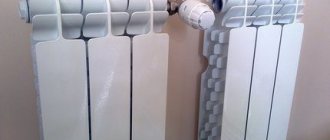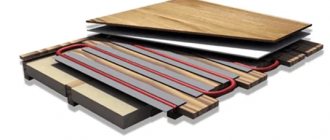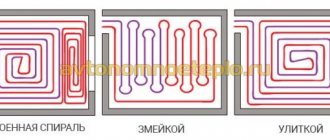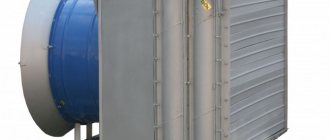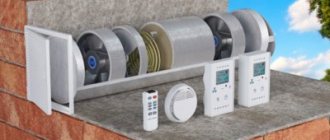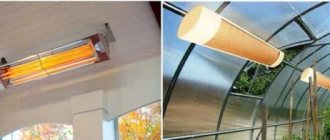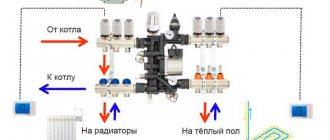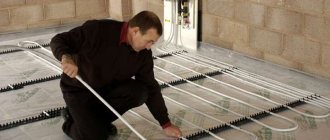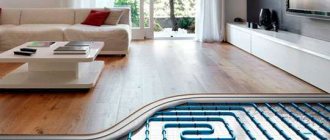Humanity knows many ways to heat a home. From stoves and fireplaces to solar-powered convectors. When choosing a heating method, various factors are taken into account:
- Room configuration.
- Availability of various types of energy carriers (solid or liquid fuel, natural gas, electricity, etc.), as well as the possibility of application at a specific facility. For example, in an apartment building it is impossible to install an individual wood-burning boiler.
- Economic feasibility: in regions, the cost of energy varies significantly.
- Possibility (and necessity) of redundant heating systems;
- Automation of heating systems - it is not always possible to constantly monitor the heating boiler.
- Aesthetic component.
We will look at a progressive technology: carbon fiber (carbon fiber) heated floors.
Why are electric underfloor heating systems so popular in modern homes?
- Heated air is formed at the lowest level, rising evenly throughout the volume of the room.
- Large heat exchange area minimizes losses.
- You can walk barefoot on a heated floor in winter;
- Flat heating elements fit perfectly into the interior: they are simply not visible under the floor covering.
- Electric cable heated floors make it possible to fully automate the climate system. The controller not only maintains the set temperature; you can set reduced cost modes (when you are not at home), or turn on the heating using a timer.
- There are no problems with energy delivery: almost 100% of the housing stock is electrified.
- Simple installation: no need to lay pipes for the coolant liquid, install heating radiators, fans, pumps.
- No maintenance required: a properly organized heated floor lasts a long time. Any self-respecting manufacturer provides a minimum 10-year warranty.
There are also disadvantages, which, however, are covered by advantages:
- To install the system, you will need to open the floor covering. In the case of linoleum or laminate - no problem. And if you want to introduce a carbon heated floor under the tiles, you will have to carry out a complete renovation of the room.
- Relatively high cost of equipment, especially thermoelements. True, this problem only arises once, during purchase.
- The cost of obtaining heat is higher than when using gas or solid fuel.
And yet, the main advantage: the carbon floor can be laid and connected independently. This requires ordinary household tools and basic home craftsman skills.
Types of electric floor heating systems
Heating systems using electrical energy can be divided into three main groups (each of which offers several options):
- An electric cable is used as a heat generator; the radiation is convection (heat rises up through the air).
- A simple embedded cable in the form of a thermocouple. Placed in a cement screed or self-leveling floor (wet installation). Optimal type of finishing coating: ceramic or porcelain tiles, stone. Can be used under wood, laminate, carpet and linoleum.
- The so-called “smart cable”. The installation method is similar (wet). Optimal type of coating: ceramic or porcelain tiles, stone, wood (including parquet), laminate. Carpet and linoleum are allowed.
- Modular heated floor, consisting of heat-insulating plates with a cable inside. Mounted on a dry base. Ideal for all types of tiles, wood floors, laminate and linoleum.
- Film floors that create a uniform climatic surface that is heated over the entire area.
- Heat mats, which are a modified design of cable heating. The emitter is already placed in fixing grids, conveniently formed for installation. They are filled with a “liquid” floor or laid in a screed. The main purpose is stone, tile. Can be used as a screed under wood, laminate, carpet and linoleum. Heating method is convection.
- Film carbon heated floor (another name is carbon). Ideal for installation under natural parquet or laminate. Installation under linoleum or carpet is allowed. Carbon heaters use an innovative heating method: infrared.
- Rod heated floor, also with carbon heating elements. It fits into the structural elements of the building, in other words, it is poured into a screed or self-leveling floor. Suitable for any type of coating, including stone, tile, wood, and artificial materials. It also uses an infrared method of transferring thermal energy.
Operating principle
Since our review focuses specifically on carbon technologies, we will analyze the principle of operation of a heated floor made of carbon.
First, let's understand the terminology. The concepts “carbon” and “carbon” cannot be separated: they are the same technology. It’s just that in Russia the word “carbon” or “carbon fiber” is traditionally used, but in foreign catalogs it sounds like “carbon”. In fact, they are the same thing.
Manufacturers offer two types of carbon flooring: film and rod. They differ in the method of installation, the structure of the heating elements, and application.
Laying a carbon floor under tiles
On top of an installed carbon fiber floor, a screed device is required before tiles can be laid. For this you should use a special mixture intended for heated floors. The following requirements must be met.
The minimum permissible thickness of the screed is 20 mm: this condition is dictated by the need to obtain a uniformly heated surface.
1. Laying ceramic tiles is possible only after the screed has completely dried, that is, after 28 days.
2. Carbon rods can be laid directly into tile adhesive. The adhesive mixture is selected that can withstand heat. The adhesive layer should also not be thinner than 20 mm.
3. Distribute the glue over the floor and level it only with a plastic notched trowel, since a metal one can damage the insulation of connecting wires and carbon rods.
4. To prevent the screed or glue from cracking, a strip of polyethylene foam should be laid along the wall before pouring. It will compensate for thermal expansion.
Carbon thermal film
Durable heat-resistant polypropylene is used as a supporting base. This material is developed with complete environmental neutrality. That is, under normal heating operating conditions, heated floors should not emit a single harmful molecule into the room.
The film is made according to the principle of triplex automotive glass: 1–2 layers of substrate, a working layer, and on top another 1–2 layers of protection against damage. Special strips made from a mixture of carbon and graphite are laid on the bottom sheet. Electrical resistance is carefully calculated, since stability of operation depends on it. Carbon is applied by spraying, which eliminates uneven thickness. The working strips are connected to each other using the thinnest copper bars. This metal has excellent electrical conductivity, so supply voltage losses are minimal.
The copper conductors themselves do not take part in the heating process. The protective layer (polypropylene top) not only protects the carbon strips from damage, it serves as a thermal conductive bridge between the heat source and the floor covering.
A few words about the polymer shell: It has high resistance to pressure, tearing and abrasion. In addition, the characteristics of the protective film remain stable even at a temperature of 120 °C. This is at least twice the maximum operating temperature of the heating film.
The principle of operation of carbon elements is the radiation of long infrared waves. That is, heat penetrates through the floor covering and directly affects objects in the room. This is exactly how we feel the infrared waves from a fire: the heat is alive, as if it is being reproduced naturally.
Advantages and disadvantages of carbon fiber film systems
Undoubted advantages:
- high temperature does not destroy or deform the film structure;
- warming up occurs almost instantly;
- the heat distribution is absolutely uniform, it is simply a powerful flow of controlled energy;
- infrared radiation is not only harmless, it has a beneficial effect on the body (it is even used for medicinal purposes);
- withstands heavy weight under pressure;
- carbon floors are not subject to corrosion and can withstand slight humidity;
- There are no unpleasant odors when heating;
- absolute fire safety: this property is especially important when using carbon film in wooden houses;
- easy installation, no additional surface preparation required;
- the ability to use not only on the floor, but also on the walls (use on the ceiling is pointless, warm air does not fall down);
- mobility: since film floors are not built into structural elements, they can be dismantled and reused in another room;
- modular design: if one section is damaged, the rest continue heating (provided the copper connecting strips are intact);
- carbon heaters are so thin that when installing the film there is no need to change the height of the floor covering;
- electric heaters are perfectly integrated into the intelligent control system “smart home”;
- in comparison with “warm floor” cable systems, film carbon is 30% more economical;
- electrical safety: the heating elements themselves have a reduced voltage, 220 volts only at the input to the control module.
Perhaps the only serious drawback:
- the material is quite fragile to fracture, so care is required during installation;
- the high cost of the equipment is certainly justified by its good performance properties, while the product does not belong to the category of affordable ones.
Installation of a carbon heated floor is carried out directly under the finishing coating, directly on the heat-insulating layer (vapor barrier).
Based on the technology, there is only one limitation: carbon electric floors cannot be placed under stone or ceramic tiles, since “wet” installation is used. It is not advisable (although not prohibited) to use under thick carpet. The fleecy structure will simply screen infrared radiation.
When laying under wood or laminate, remember that this material dries out at high temperatures. Therefore, a limiter of no more than 28 °C is installed on the control panel.
Information: There is a cheaper option for infrared heating. This is a bimetallic film. A two-layer compound of aluminum and copper foil is used, which, like graphite carbon, emits infrared radiation. However, the consumer properties of such film are much worse.
Pros and cons of carbon flooring
Infrared heated floors have their positive and negative sides. Before deciding on the advisability of purchasing and installing it, you should take a closer look at all the features of this system.
What's wrong with carbon heating?
The use of carbon rods or films when installing a heated floor system in a house or apartment has the following disadvantages:
- high cost;
- fakes;
- complex repairs;
- need for additional insulation.
Original systems offered by reputable manufacturers are not cheap at all. Especially when it comes to carbon rod mats. Not every buyer who wants to install infrared heated floors in their home is able to shell out a large sum.
The second drawback smoothly follows from the first drawback - the appearance of a large number of fakes on the market. They are distinguished by their low price and questionable quality.
Purchasing low-quality counterfeit but cheap systems results in a headache for the buyer - the rods quickly burn out, reducing the total heating area
The difficulty of the repair lies in the need to remove all the decorative covering to get to the heated floor system. There is no other way to replace the broken section. If tiles are laid on top, this complicates the repair even more.
The need for additional insulation of a house or apartment will be in the case when infrared heating is the main one. If energy saving work has not been carried out, then the heated floor will spend a lot of energy maintaining the desired temperature in the room and may not cope with this task.
Insulating a house, cottage or apartment can significantly reduce costs not only with infrared, but also with other types of heating. In such a room it is easier to maintain a comfortable temperature with the help of heated floors, spending a minimum of energy on their operation.
Advantages of infrared heated floors
A warm floor made of carbon film or rods has a number of advantages. This:
- fast;
- easily;
- available;
- economically;
- Beautiful;
- safely;
- without repair.
The first point implies the speed of installation of carbon heated floors. If the area to be laid is small, then all the work can be completed in 1 day. If you invite masters, then everything will take even less time.
Setting up an infrared heated floor system is easy - just a simple set of tools, as well as the materials that come with carbon film or rods.
It is not at all necessary to involve a specialist - installation will be within the power of every diligent owner
The price of film material is affordable. If we compare the cost of all the parts and components needed when installing water or steam heating, then infrared significantly wins here - you don’t need to buy pipes, radiators, a boiler and other expensive equipment.
It is beneficial to use carbon heated floors both as an additional and as a main source of heat. If the system is installed correctly and the house/apartment/cottage is insulated, then energy consumption will be minimal. Costs will directly depend on the area covered with infrared film or mats.
The beauty of this type of room heating is that once installed, the heated floor is not noticeable in the room. It does not take up useful space, like, for example, heating radiators. The thickness of the entire system, including the heat-insulating layer, is less than 2 cm.
Infrared heated floors are completely safe. It is not afraid of water and can be placed in the bathroom and kitchen. If any section stops working, then nothing will happen to the entire system - it will continue to heat up as usual.
Carbon film floors are installed in kitchens, living rooms, bedrooms, living rooms, and children's rooms. They are laid under linoleum and laminate, and used in the installation of heated floors under floor tiles.
If one rod or strip of carbon film stops working, then you can do without repairs - the entire system will continue to function
All heating elements are located in parallel, which eliminates the possibility of failure of the entire system at once. This is convenient, because the loss of one working strip will not fundamentally affect the operation of the entire system.
Carbon fiber rod floor
Contrary to advertising brochures, this is not a new generation of carbon fiber technology: rod mats have not replaced film carbon. This configuration is used where film cannot be used (poured into a screed or self-leveling floor). It is a set of parallel connected hydrocarbon rods with an admixture of graphite and silver, connected in parallel.
Technologically, the heating element is not even a rod. A bundle of carbon fiber threads is assembled to the required diameter and securely covered under insulation. The shell material conducts heat well and protects the material, which is quite fragile to fracture, from mechanical loads during installation and use.
Graphite threads combined with carbon and silver, when electric current passes through them, emit infrared waves. The material allows one to calculate the resistance with precision and obtain the necessary thermal characteristics.
Since each rod is connected independently (on parallel buses), the failure of one (or several) elements will not affect the performance of the system. Unless there will be less heat. However, the installation method (pouring into concrete) implies high requirements for reliability. Unlike carbon film, these heaters cannot be simply replaced; you will have to destroy the entire surface of the screed.
Since the system is a monolith with an overlap, it is necessary to take care of the direction of thermal radiation (infrared waves). They diverge evenly in all directions, so when laying it is necessary to provide a screen on the back side.
Otherwise, a significant part of the energy will be spent on heating the neighbors below (or the basement in a private house).
An interesting feature of carbon rods is their ability to self-regulate temperature. When overheated, the resistance decreases and the rod cools down somewhat. This allows you to install heaters over the entire area of the room, without highlighting the location of the furniture. This is very convenient, especially given the inability to reconfigure the location of the thermal mats after the concrete has hardened.
Film floor installation
All carbon systems are laid on a flat surface. It is recommended to level the base. Differences of 1 mm per 1 linear line are allowed. m. Thermal film and rods heat the entire surface around: not only the floor covering, but also the lower base, the foundation. To allow warm air to pass upward, thermal insulation and a reflective screen are laid on the base. Next, the thermal film is installed.
The boundaries of the “warm floor” are marked on the floor. The film is placed at a distance of at least 5 cm from the wall and from furniture. The gap between the strips is 2 cm.
Pay attention to the width of the roll. If the width is 50 cm, then the length of the tape should not exceed 13 m
The larger the width of the roll, the shorter the permissible length of the tape will be: width 80 cm – length 10 m; width 100 cm – length 7 m. It is recommended to pre-mark the film and divide it into separate strips. There is a place on the wall for a thermostat. Make a hole into which a plastic cup is inserted. It will contain the entire electrical part of the system and the control unit. The control panel is left on the wall surface. Thermal film strips are laid according to the markings. They are connected using tape. Contacts are connected to each sheet. The terminals are installed in the area of the copper and silver busbar. Strengthen the terminals with pliers. Install the wiring; connect the terminals. The connection diagram is parallel. The joints are insulated with bitumen tape. Insulation is used to cover the cut areas in the area of the metal bars. So that the joints do not stand out on the surface and do not experience heavy loads from the floor cladding, a recess is made for them in the substrate or in the reflective screen. A temperature sensor is installed on one of the tapes. A distance of 60 cm is maintained from the wall to the sensor, and 10 cm from the edge of the film. A niche is cut out in the substrate for the sensor. All wires are led out into a corrugated tube, which is connected to the thermostat. For the pipe, a groove is made in the floor and wall, which is then sealed with mortar. The system is being tested. If the result is positive, the carbon floor is covered with a substrate and laminate is laid. To lay the tiles, use tile adhesive.
Advantages and disadvantages of carbon rods
Advantages:
- fast heating, uniform distribution of thermal radiation (in the presence of a reflective substrate on the rough side);
- high reliability of the design - service life of at least 50 years;
- convenient installation: you simply cut the required length from the roll and connect the surface with wires;
- infrared radiation does not have a negative effect on people and interior items;
- It is not the air that is heated, but the parts of the room;
- 100% fire safety: firstly, carbon fiber does not burn, secondly, the system is walled up in concrete;
- the system is not afraid of high humidity: even if you have a flood, after collecting water, the heaters can be turned on immediately;
- when leaving the living space without heating (during a long departure), the system will not defrost;
- just like film panels, the rod carbon floor is integrated into the “smart home” system;
- energy consumption is lower than that of cable heated floors;
- If you can make a screed yourself, you will also do the installation of carbon rods yourself: saving on installation.
The sets are offered in different price and size categories.
Disadvantages of technology:
- for mass use the cost is too high;
- for installation it is necessary to fill the floor with a mixture, this reduces the height of the room;
- an installation error or malfunction (this is unlikely) does not give a chance to fix the problem: all wiring is under a layer of concrete.
Main advantages
Rod carbon flooring began to be used not so long ago. But already in such a short time it has undeniable advantages over other types of floor heating:
- Does not dry out the air. Thanks to carbon, it is not so much the nearby objects in the room that heat up, but the air itself, but it does not dry out. Humidity does not fall below 60%.
- The base is flexible, suitable for many decorative finishing materials.
- Useful heating with infrared waves that do not harm indoor plants and humans.
- Ease. Installed on any floor coverings.
- There is no possibility of spontaneous combustion.
- Installation is possible even in rooms with high humidity.
- Quickly warms up the air without drying out.
- The intelligent carbon system is able to self-regulate when overheated and evenly distribute the air temperature throughout the room.
- Over time, furniture can be placed on a carbon floor if it was not previously intended to be there. And this will not serve to heat the wardrobe or cabinet.
conclusions
When planning your home's heating system, pay attention to carbon fiber technology. Perhaps the carbon heated floor will become the only source of heat. In fact, the optimal use case is a redundant system. You can always choose which energy carrier is more profitable in a certain period. In addition, you can use heated floors simultaneously with traditional heating.
And if you leave the house for a long time, you can set an economical mode with intensive heating on a timer for the time of your return.
What is a heated carbon mat floor?
Carbon heated floors should be considered as an additional source of heat and as an independent heating system. Panel heating of this type is available in different modifications, which allows consumers to choose the most optimal type. The system is highly adaptable and cost-effective.
An innovative option for heating a home is powered by an infrared energy source. Most often, graphite-silver rods connected in parallel to each other are used for this. For this purpose, wires with an increased degree of protection against overheating are used in production.
The insulating material is a substance based on polyester and polyethylene. The main component of the product is the heating element, which consists of carbon and polymers. The cable used for these purposes is made of copper. Its cross-section is 2.5 mm. It is insulated with a shell up to 3 mm thick.
Everyone who has used carbon heated floors claims that the modern market cannot offer a more profitable option for panel heating. In a house where this type of heating is installed, natural air humidity is always maintained. An intelligent heating system with modern thermostats and temperature sensors helps with this.
All currently existing variations of carbon-based panel heating are complemented by a detailed description of the installation and operating instructions. The buyer only needs to choose the most optimal option, show a little effort in order to surround himself with warmth and comfort for a long time.
